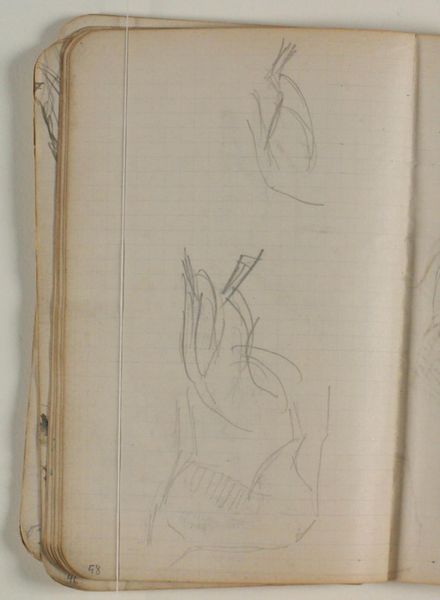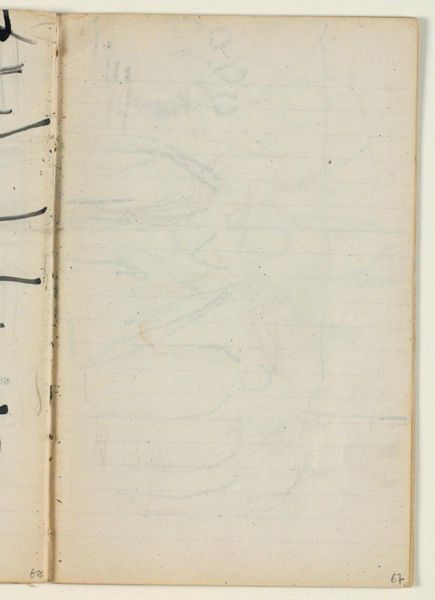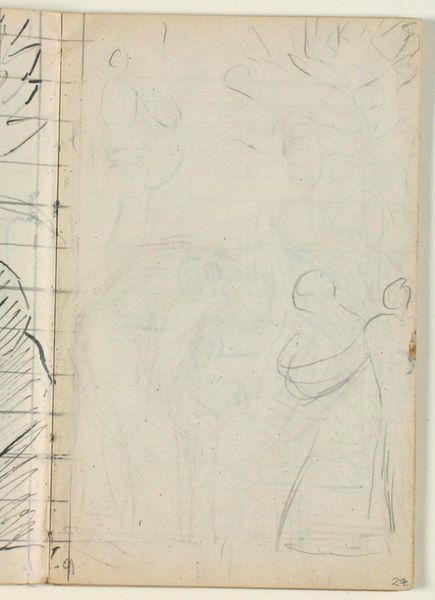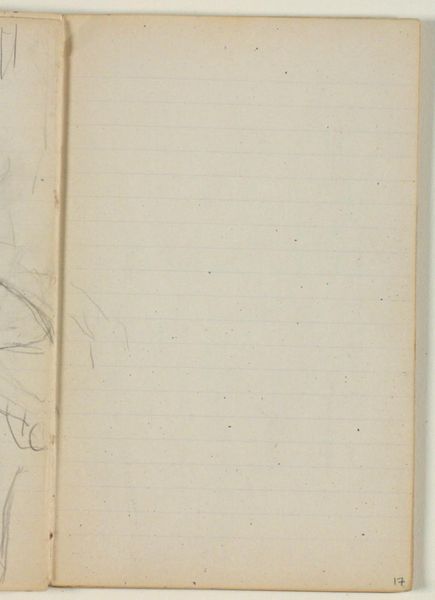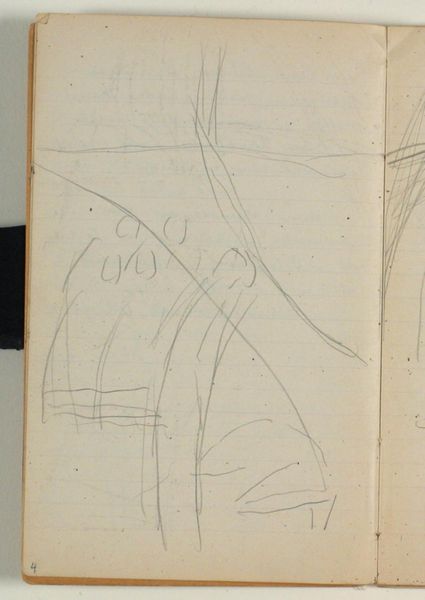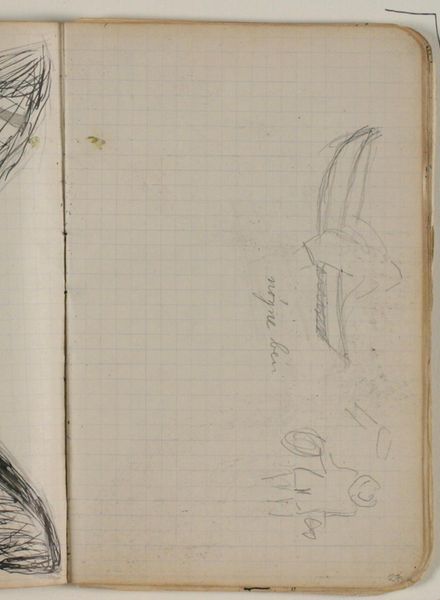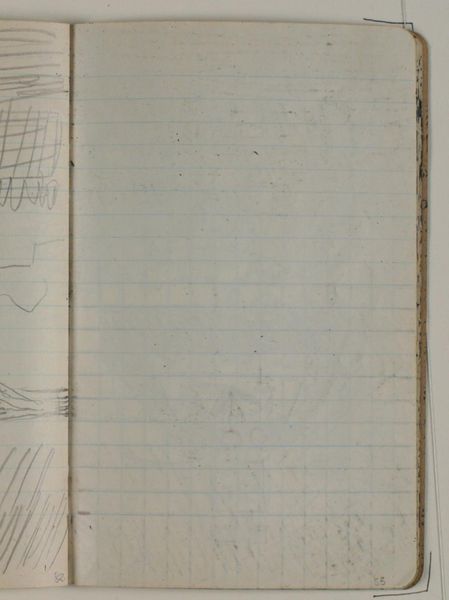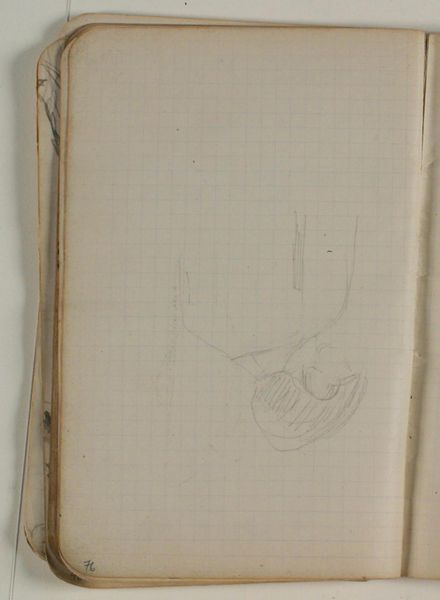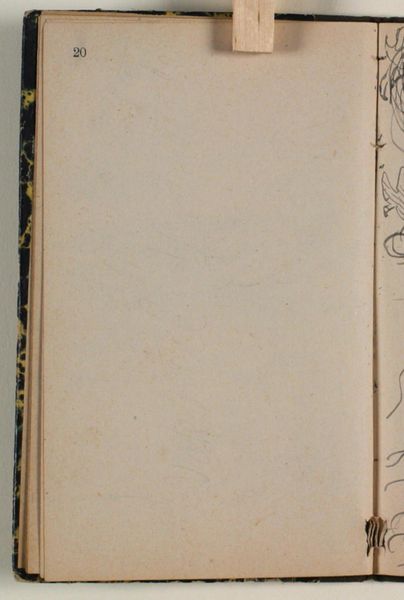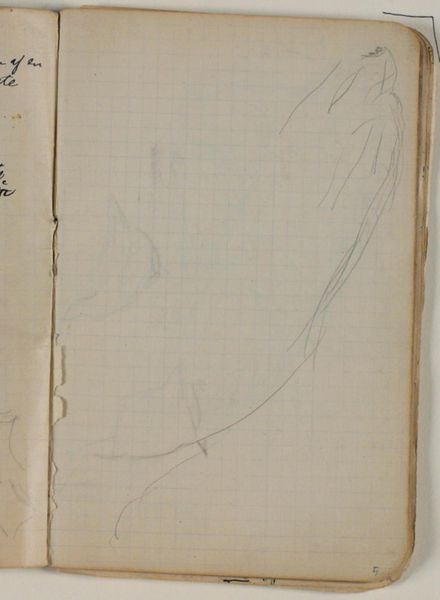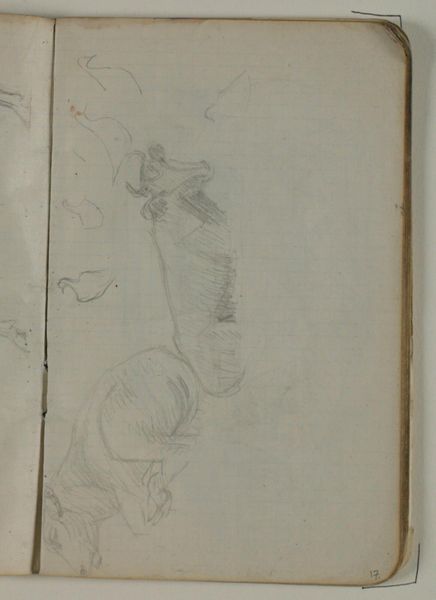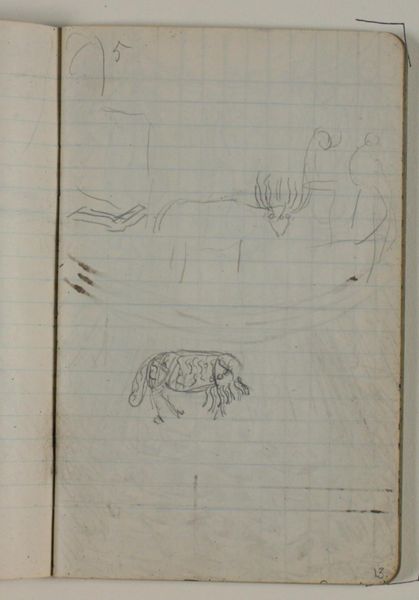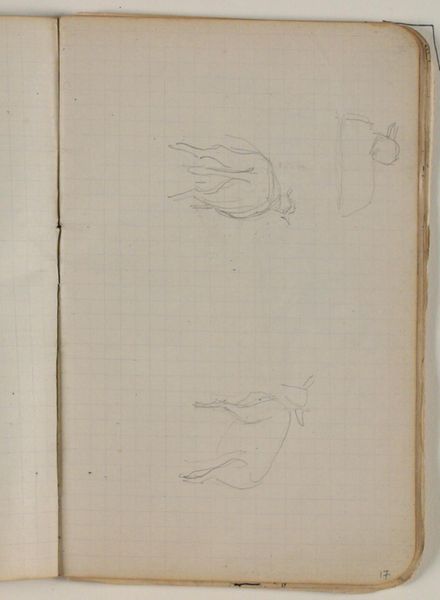
drawing, paper, pencil, graphite
#
drawing
#
paper
#
geometric
#
pencil
#
abstraction
#
graphite
#
modernism
Dimensions: 175 mm (height) x 109 mm (width) (monteringsmaal), 175 mm (height) x 109 mm (width) (bladmaal)
Curator: Welcome. We’re looking at Niels Larsen Stevns’s work from 1933 to 1934, simply titled, "Blank," currently held at the SMK. It's a pencil and graphite drawing on paper. Editor: The worn paper and faded pencil lines give it such a quiet, almost vulnerable presence. It really feels like peering into someone's private sketchbook. Curator: Precisely. There’s a powerful juxtaposition between the geometric and abstract elements in this drawing, on the left page we can discern the barely visible figure; a form suggesting the torso. It's countered by the strong abstract geometric figures that dominate the right page, creating a fascinating dialogue about representation and abstraction, and perhaps a societal struggle in 1930's Europe to re-write figuration from its core. Editor: I'm immediately drawn to the physical properties of the paper. It looks thin, almost fragile, you can practically imagine the feel of the graphite transferring, marking its surface; considering the labor invested, and it's current physical presence raises interesting questions about value and preservation and accessibility through material reality. Curator: Considering the historical context, Stevns created this in a period of great upheaval. The rise of fascism and the growing threat of war impacted artists deeply. This almost obscured figure suggests a vanishing cultural presence. Editor: Yet, the means are so immediate and readily accessible. Graphite, paper, time spent… these materials and gestures speak to the universality of artistic production as work. Were sketchbooks accessible to workers in the 1930s, did he labour in vain at creating this geometric construction? It offers me a chance to reconsider the power of these gestures in context. Curator: I agree. There’s a dialogue here between intention and raw expression, mirroring broader conflicts. It’s a delicate balance, a quiet tension rendered beautifully through simple means. Editor: Yes, "Blank" allows us to think more carefully about what making means as an activity tied up in labour and materials and less about inspiration.
Comments
No comments
Be the first to comment and join the conversation on the ultimate creative platform.
